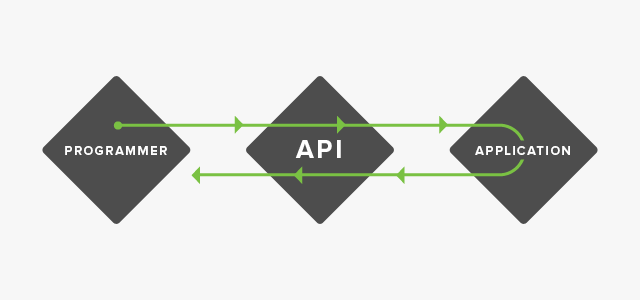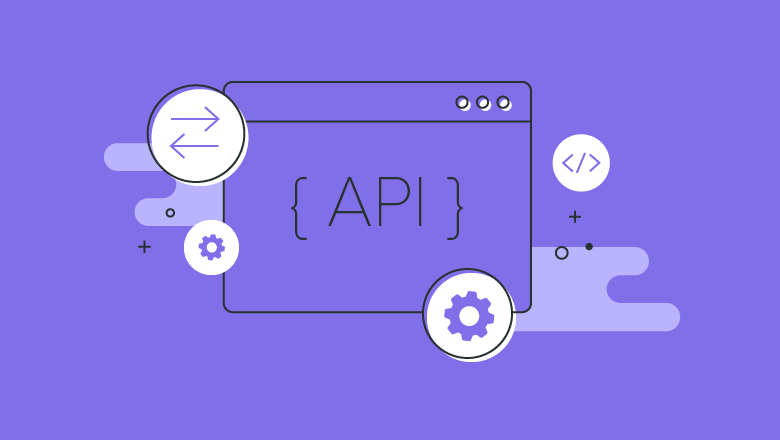Your Internet experience runs on APIs. The acronym has helped you compare the best prices for flights, allowed you to embed a map into your store’s website and seamlessly processed your credit card payments.
But what is an API and why does it matter to you? In this article, we’ll give a high-level overview of APIs and how they relate to your daily life:
What is an API?
API stands for application programming interface. It’s a concept and an intangible item. APIs operate on an agreement of inputs and outputs.
Application: These can be apps that you use on your smartphone or a software program that you use.
Programming: Developers use APIs to write software.
Interface: How you interact with the application.
To use an analogy here, we’ll compare this to ordering a drink at a bar. When you step up to the bar, you’re given a menu with several drinks listed. There’s an agreement here or the concept of the API, where you’ll order a drink and be served a drink.
The menu as it’s presented to you is the interface. All the drinks listed on the menu are what the bartender has agreed to serve. When you ask for a certain drink on the menu, you receive it. But if you ask for something off the menu, such as a vodka martini instead of a gin martini, the bartender will tell you no because it’s not something they agreed to serve.
Let’s say you want the martini delivered to your home. You call a delivery service and you order a martini. When you order it, someone will tell the bartender your order, the bartender will make the martini and then someone will deliver it to your home. This is an example of an service built on an “API” (the menu).

There are Multiple Types of APIs
Public APIs are released by companies like Slack and Shopify in hopes that developers will use them to build on their platforms. The company will share a set of inputs that you can use to achieve certain outputs. For every input, they agree to give an output and the output does not differ.
You don’t need to submit your app for approval for a public API. They’re usually documented and can be accessed without too much fanfare.

In Slack’s case, their API is available to browse and use.
Private APIs are used internally at a company. If a company has multiple software products, private APIs are used for the software to “talk” to each other. The components of the APIs can change at the company’s whim, whereas a change to a public API would cause an outcry.
How Does an API Relate to Social Media Marketing?
The major social media networks all have APIs. While you are prohibited from using them to duplicate the company’s core service and sell that as your software, you can build on them to improve the experience.
Twitter’s API allows you to access certain points of a public profile. As a basic use of the API, you could write a program where you can search for someone’s username and it’ll return the profile page. Instead of walking up to the Twitter office every time you have a request, the API gives access to the program to return the profile page.
If you use a third-party social media management platform like Sprout Social, then you’ve experienced the use and limitations of APIs. They allow you to post, comment and like posts on behalf of your account. The advantage of software built on social media APIs is that you’re able to view multiple accounts in one place.
But APIs also limit you in what you can do and it’s not an issue with the software. For example, you can’t schedule Instagram posts to upload and post on your behalf while you’re sleeping.
The reason isn’t that all the software is conspiring against you. It’s because the Instagram API doesn’t allow for this to happen.
When the scheduled post notification pops up, the content populates but still doesn’t post, because Instagram doesn’t want third-party apps to post for users.
In general, the native application will always have the full suite of features and the app built on it will only be able to access a small portion of it.
Why are APIs Important for You?
As we mentioned earlier, your Internet experience runs on APIs. Instead of accessing four different companies four separate times, you may use one software to access all four at the same time.
APIs Streamline Your Processes
The Sprout Social Smart Inbox is an excellent example of this. Before, you would log into Facebook and Twitter separately, check messages, run search terms and respond when you were tagged. Now, thanks to the networks’ APIs, you can see it all in one view, cutting out on extra time.

Need to save time managing social? See how Sprout Social can increase your efficiency and help you engage with your audience with a free 30-day trial. Sign up now!
Apps Make Your Life Easier
If you use public transit, you likely have an app telling you when the next bus is arriving. The app uses the transit’s API to show which bus is arriving and when. It saves you time and possibly from freezing if you live in a cold climate.
Businesses Expand with APIs
A business’ potential can be expanded when they offer an API. There are only so many resources a business can offer. Having an API available, with developers who are eager to build on them, can expand their offerings to more people.
A good example is a software like Mint that can connect with multiple banks and compile it in one area. A bank’s core offering is storing your money and recording your credit card expenses. The bank allows Mint to connect to its API, so you can better manage your money and consequently, continue being a customer at the bank.
5 Things You Should Know About APIs
To recap, here are the five takeaways for APIs.
- Developers work with APIs to create software and apps. It’s rare for you, the end user, to directly interact with an API.
- APIs operate as a gate, allowing companies to share select information but also keeping unwanted requests out.
- APIs can make your life run a little smoother. When airlines share data about flights and prices, travel aggregating sites can compile them all and help you compare.
- Businesses are built on APIs. Sprout Social itself is an example of a software that is built on the APIs of social media networks.
- If you’re using a third-party app to manage your social media, it might not be the app’s fault that a feature isn’t being offered. It’s more likely that the network doesn’t have it as part of their API.
Follow us on Twitter to discuss all things technical with Sprout Social or check out our engineering blog posts!
